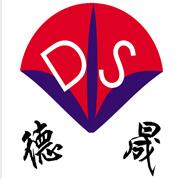Product Categories
- Enzyme(14)
- Carbomer(2)
- Blood collection tube additives(12)
- trinder's reagent(9)
- Biological buffer(21)
- Chemiluminescence reagent(9)
Contact Supplier
| Hubei xindesheng Material Technology Co., Ltd | |
|---|---|
| Country: | China |
| Tel: | +8618971041571 |
| E-mail: | zjing9632@gmail.com |
| QQ: | 2198447049 |
| Skype: | Chat Now! |
What is analytically pure 2-cyclohexylamino Ethanesulfonic acid CHES?
Release time: 2023-07-31
What is analytically pure 2-cyclohexylamino Ethanesulfonic acid CHES?
2-cyclohexylamino Ethanesulfonic acid (CHES) is a commonly used buffer, which can be divided into industrial grade and analytical grade. As a chemical reagent of analytical grade, it has unique chemical properties and advantages, and is widely used in the research of Protein structure and function, regulation of enzyme catalyzed reaction and other biological experiments in the field of biochemistry and molecular biology, making it one of the indispensable reagents. The following will provide a detailed analysis of the properties, uses, and advantages of CHES buffer, in order to better understand the application value of this important chemical reagent.
1、 Chemical properties of CHES
CHES chemical name is 2- (N-cyclohexylamino) Ethanesulfonic acid, the Molecular formula is C4H10N2O4S, and the relative molecular weight is 182.2 g/mol. It is a white crystalline powder that is easily soluble in water at room temperature and has a relatively stable pH value. CHES buffer exhibits good buffering ability in the pH range of 9.3 to 9.7, and is therefore widely used in experiments under alkaline conditions.
2、 The purpose of CHES
CHES buffer is widely used in biochemistry and molecular biology research. It can be used as a buffer system in cell culture, Protein purification, enzyme activity determination, nucleic acid electrophoresis and other experiments. Due to its strong buffering ability near pH 9.5, CHES is widely used to study the reaction mechanism and structure of catalytic alkaline enzymes.
3、 Advantages of CHES
CHES buffer has multiple advantages, making it highly favored in biological experiments. Firstly, CHES can provide a wide buffer range, particularly suitable for experiments that require high pH values. Secondly, it does not interact with cell components under physiological conditions and does not produce toxicity or adverse effects on organisms, which is conducive to cell survival and stable cell culture. In addition, its pH value is relatively stable and can maintain relatively constant pH conditions in the experiment, ensuring the accuracy and repeatability of the experiment.
4、 Precautions for use
Although CHES buffer has shown good performance in many experiments, some precautions still need to be taken when using it. Its pH range is suitable for alkaline conditions and should not be used under high or low pH conditions. It may decompose during heating, so high-temperature treatment should be avoided. At the same time, the appropriate concentration of CHES buffer solution needs to be selected according to specific experimental requirements to ensure optimal buffering performance.
Reasonable selection and use of CHES buffer can provide a reliable foundation for experiments and provide strong support for scientific research and applications in related fields. During use, attention should be paid to the quality issues of CHES, and it is recommended to choose reliable suppliers. Desheng Biochemical, as a professional manufacturer of biological buffering agents, has a complete product range and provides sample testing, providing customers with comprehensive choices and guarantees. If you have any interest, please feel free to contact us for purchase!

